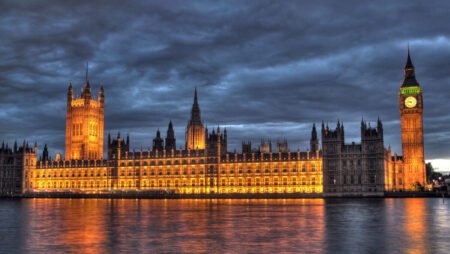Historically, the American left has operated under an unspoken rule: “no enemies to the left.” This principle, intended to preserve internal unity in the face of political threats, discourages public criticism of even the movement’s most radical elements so long as they advance the left’s overarching goals of acquiring and maintaining political power, winning elections, and discrediting conservatives and Christians in the cultural sphere.
This strategy is visible in the Democratic Party’s response to any scandal that affects their side.
When leaked text messages revealed that Virginia attorney general candidate Jay Jones once wrote that a Republican legislator deserved “two bullets to the head” and that his children should “die in their mother’s arms,” prominent Democrats have continued to offer their full support.
The right, by contrast, has no such instinct for self-preservation.
Conservatives not only face rhetorical and physical attacks from the left, as evidenced by continued violence from Antifa, the assassination of Charlie Kirk, and witnessing the subsequent celebrations of his murder, but also constant moral policing from self-described “classical liberals” and “moderate” Republicans who demand ideological purity within the GOP while opposing many of the policies of MAGA and the America First movement.
While Democrats enthusiastically rally behind candidates like Jay Jones who openly fantasize about political violence, Republicans like JD Vance or conservative commentators like Matt Walsh are treated as if they are complicit in extremism when they refuse to publicly condemn young Republican members of a leaked group chat over a handful of offensive jokes or the controversial opinions of right-wing media personalities like Tucker Carlson and Candace Owens.
These attacks on conservatives come from two distinct places, yet have a common underlying deference to liberalism, whether of the left and right varieties.
The first are disaffected left-leaning liberals who, though alienated by the modern left’s obsession with social justice causes, radical gender ideology and identity politics, still carry its moral and cultural assumptions. Rebranding themselves as “classical liberals,” they attempt to steer the Republican Party toward a sterile centrism, one that preserves their social respectability while weakening the populist right’s energy.
The second are right-leaning liberals nostalgic for the pre-Trump era of neoliberal economics and neoconservative foreign policy. They see the rise of economic nationalism and restraint abroad as a direct threat to their ideological project and therefore spend more time attacking populists on the right than confronting the institutional left.
Together, these two factions operate as a bookend containment mechanism, keeping Republicans and conservatives divided, defensive, and ultimately incapable of achieving the kind of right-wing disciplined solidarity that has made the left such a durable political force. The result is a demoralized right perpetually apologizing for existing while the left advances unimpeded.
Two recent articles, one published by Bari Weiss’s self-professed “centrist” news outlet, The Free Press, and another featured in the Never-Trump publication, The Bulwark, clearly demonstrate this point.
In The Free Press article titled, “The Foolishness of ‘No Enemies to the Right,’” conservative Seth Dillon argues that conservatives must confront harmful ideas within their own ranks rather than blindly uniting with, or simply ignoring, the right’s fringe elements.
Drawing parallels to the left’s past refusal to challenge its own trans-extremists, which helped result in Kamala Harris’ loss in last year’s election, Dillon warns that the right risks repeating the same mistake by tolerating what he believes to be racism, antisemitism, and authoritarianism in the name of unity, asserting that abandoning principles for power undermines the conservative cause.
Predictably, this argument from conservatives like Dillon has been picked up and amplified by lifelong left-leaning-liberals-turned-Republicans of the “I didn’t leave the left, the left left me” kind, such as the founding editor of Reality’s Last Stand, Colin Wright.
Though only recently voting Republican, members of this faction now aim to shape the future of the party and the broader conservative movement by defining the parameters of acceptable right-wing discourse.
In The Bulwark article titled, “My Last Day as an Accomplice of the Republican Party,” former GOP staffer Miles Bruner recounts his journey from an enthusiastic California Republican staffer, grounded in the belief in “American exceptionalism” and George W. Bush’s willingness to “bring democracy to Iraq,” to a critic of the party’s embrace of the populism of Donald Trump, and his “authoritarian” tendencies.
He describes how the party’s shift away from “principled” conservatism, toward loyalty to Donald Trump and disdain for “democratic norms,” forced him to ultimately resign from his role to reclaim his integrity. Hilarioulsy, Bruner’s credentials and accomplishments on the right are so underwhelming, he hardly gives anyone a reason to care he’s left the GOP.
While Dillon and Bruner are claiming to defend “principled conservatism,” the same brand of conservatism that delivered electoral defeats under Republicans John McCain and Mitt Romney mind you, both are in reality engaging in a project of ideological containment by policing the boundaries of acceptable right-wing policy, ideas, and even controversial private discourse — all of which aligns with the goals of the left.
To reject the framing of certain right-wing discourse as “hateful,” is not to excuse genuine examples prejudice against individuals or groups, but to recognize that the moral outrage over fringe elements on the right is not in any way equivalent to the genuine threat emanating from the left.
Equating actual left-wing violence with edgy right-wing group chats creates a false moral equivalency that’s wielded as a political weapon against effective conservatives like JD Vance and Matt Walsh in an effort to discredit legitimate right-wing policies.
For example, by assigning the motivations of the fringe right to that of elected conservatives like Vance, the enforcement of immigration law can then be categorized as “racist,” the deployment of National Guard troops to crime invested cities is seen as “authoritarian” (and also racist), shutting down the border becomes “xenophobic,” and advocating for a reduction of America’s foreign entanglements in Ukraine is seen as “anti-democratic” and even “antisemitic,” in the case of Israel.
And so on, and so on, and so on until we arrive back at the Republican Party of Reagan and Bush.
Disaffected liberals like to say, “I didn’t leave the left, the left left me,” while Never-Trump Republicans often espouse, “I didn’t leave the Republican Party, the Republican Party left me.”
Both are two sides of the same liberal coin, attempting to defang a genuine right-wing populist movement while competing to shape the future of the Republican Party and conservatism more broadly once President Trump exits the political scene.
The threat the political right faces is therefore also twofold: from the left without, but also from those doing the work of the left from within.
Read the full article here












